Before the bulk of Burgundy en primeur 2019s are released onto the market, Wine Lister has published its second in-depth Burgundy study.
Below we explore the complex relationship between the region’s price performance and its popularity growth over the past two years, informing your investment decisions over the coming months.
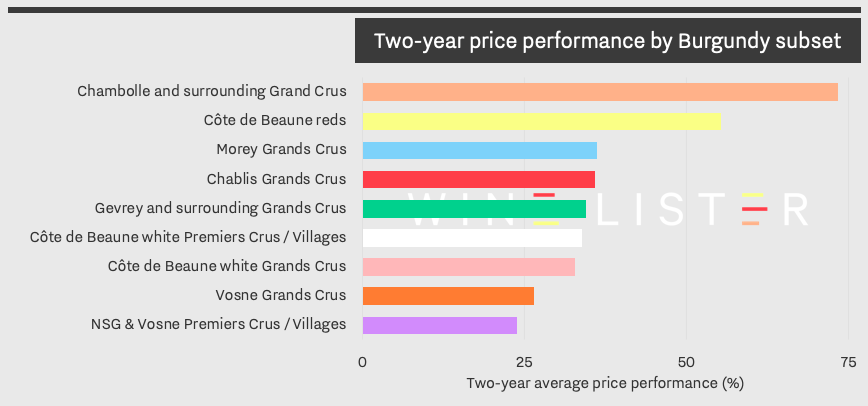 The two-year price performance of a basket of 175 Burgundy wines (the same wines featured in our previous study on the region in 2018), based on the last 30 vintages. Price data partner: Wine Owners.
The two-year price performance of a basket of 175 Burgundy wines (the same wines featured in our previous study on the region in 2018), based on the last 30 vintages. Price data partner: Wine Owners.
As shown in the chart above, Chambolle and its surrounding sites lead in the price performance of Burgundy Grand Crus, followed by wines hailing from its northerly neighbour, Morey-Saint-Denis. The notorious sub-set of Grand Crus from around Vosne – home of legendary Richebourg, La Tâche, Echezeaux, and Romanée-Conti – has seen slower price performance, which is matched with lower popularity growth (see below).
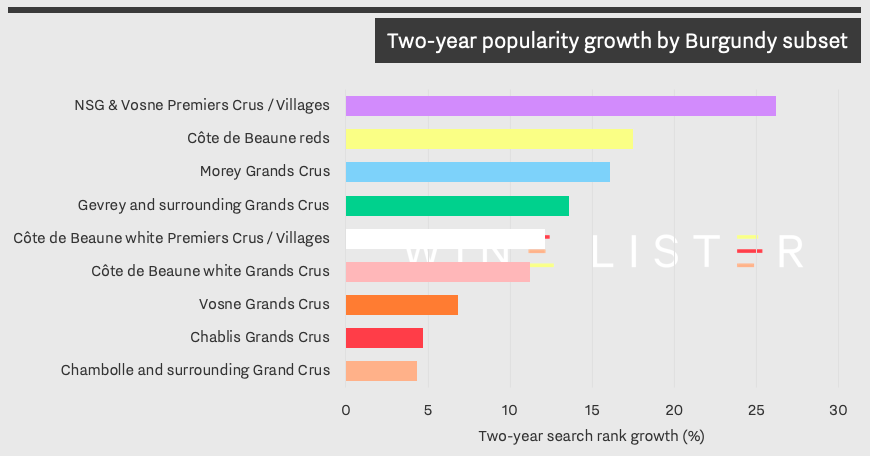 The two-year popularity growth of each Burgundy subset. Popularity data partner: Wine-Searcher.
The two-year popularity growth of each Burgundy subset. Popularity data partner: Wine-Searcher.
Though Chambolle and its surrounding Grand Crus have excelled in two-year price growth, consumer interest in the wines of this subset increased the least. Following similarly this opposing relationship between the two data sets, Nuits-Saint-Georges / Vosne Premiers Crus and Village wines gained the most popularity over the last two years by a large margin, while the subset’s price performance trails behind in last place.
A growing interest in lower-priced wines from Burgundy is further explored through trends identified by key members of the international fine wine trade in Wine Lister’s report. Producers such as Arnoux-Lachaux and Georges Mugneret-Gibourg are well worth looking out for when buying Burgundy en primeur for drinking in several years’ time.
Visit the Analysis page to purchase Wine Lister’s in-depth 2020 Burgundy study, or download it using your Pro subscription here (available in both English and French).
Burgundy prices continue to rise, and top wines are becoming ever-harder to access – but must what goes up really come down?
Wine Lister has published its second in-depth Burgundy report, with contribution from partner critic and leading Burgundy expert, Jasper Morris. With insights from key fine wine trade players from across the globe, the report investigates the state of Burgundy compared to other major fine wine regions, and discusses projections for its future performance.
Please see our key findings below:
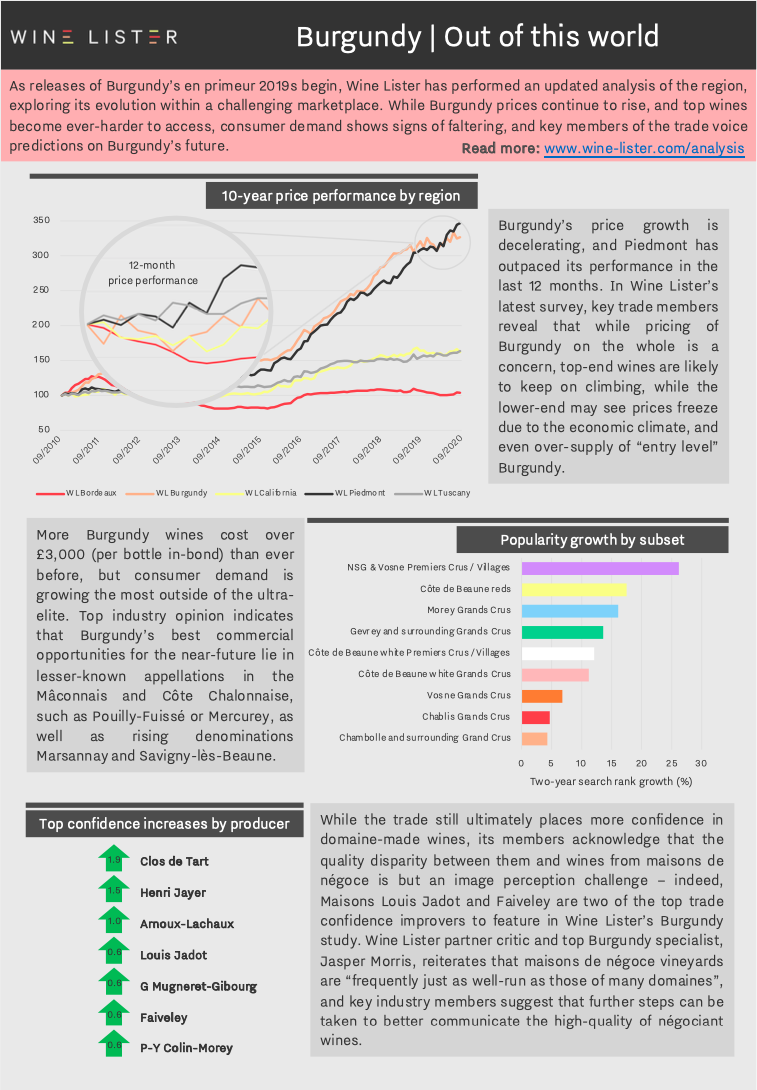
You can download the study digest in English here: Wine Lister Burgundy Study Digest 2020 or French here: Wine Lister Étude Bourgogne 2020 – Résultats Clés. The full report can be purchased on our Analysis page, while Pro subscribers can access their free copy here.
As much of Europe re-enters lockdown, the fine wine industry is once again adapting through the digital world. With many reliable retailers now running e-commerce platforms, there is simply no excuse not to purchase top-quality wine from the comfort of your own home. To help you get the best from your online buys, Wine Lister offers its top tips on avoiding compromise on your acquisitions, whether for drinking or for laying down in the cellar.
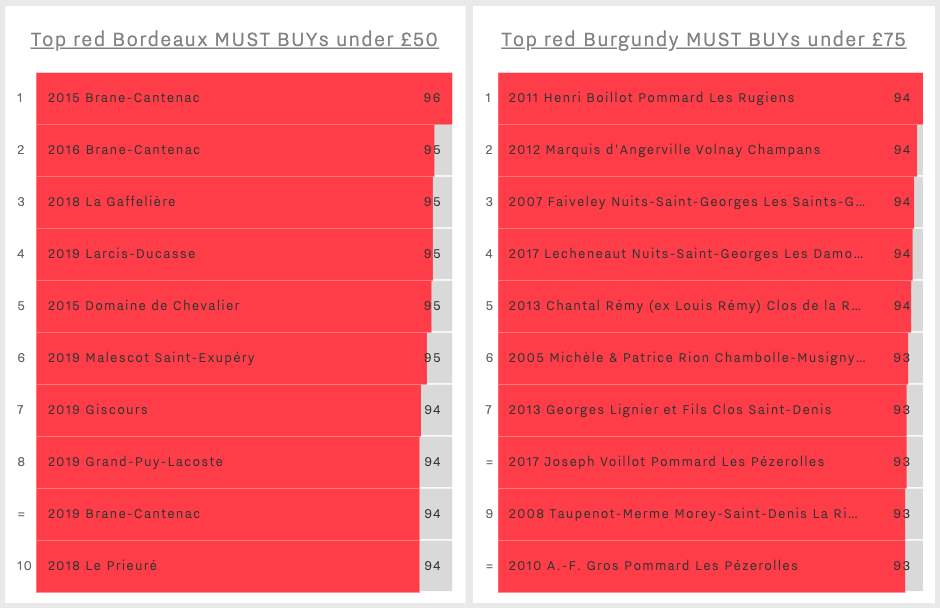
- Narrow down your drinking delights
With a plethora of brilliant bottles now available to purchase online, Wine Lister’s free tools provide a good place to start your decision journey, helping you to refine your browsing before you even begin. On top of our MUST BUY recommendation algorithm, our Wine Leagues provide top-10 lists of the best wines to source for given categories, be it appellation, price, or WL score (a quality measure comprising ratings from Wine Lister’s partner critics). Featured on the individual wine pages, Wine Lister’s drinking windows inform you of the best time to open your bottle, another key factor to consider when buying wine. The above sets of Wine Leagues reveal the top Bordeaux reds for under £50 (per bottle in-bond) and the top Burgundy reds for under £75.
- Elect an esteemed merchant
Whether you have determined what you want or not, it is crucial to buy only from trusted merchants. While pricing may vary, Wine Lister recommends sticking with reputable retailers to ensure top-notch provenance and delivery. The list of legitimate options is long, but we suggest the following (to name but a few): Berry Bros & Rudd, BI Fine Wines, Corney & Barrow, Goedhuis & Co, Justerini & Brooks, Lay & Wheeler, and Vinum Fine Wines.
- Refine through regional specialists
If your focus is on one region in particular, it can be beneficial to buy from specialist merchants. For example, Stannary Wines represent several top Burgundy producers, and Armit Wines are the agent for a number of leading Italian estates, providing dependable platforms for you to direct your search. It is useful to know which merchants are the primary UK importers of specific domains, for example, Justerini & Brooks represent Philipponnat Clos des Goisses, and Four Corners work with many top Californian fine wines.
For more industry insights and advice on which wines and regions to buy, sign up for Wine Lister’s free newsletter here.
Over the past decade, biodynamic wine has exploded in popularity, particularly amongst a younger generation of wine drinkers. Having spoken to a selection of top producers that follow biodynamic farming, Wine Lister’s latest investigation attempts to explore the practice further, and better understand the shared values of this often-misunderstood philosophy.
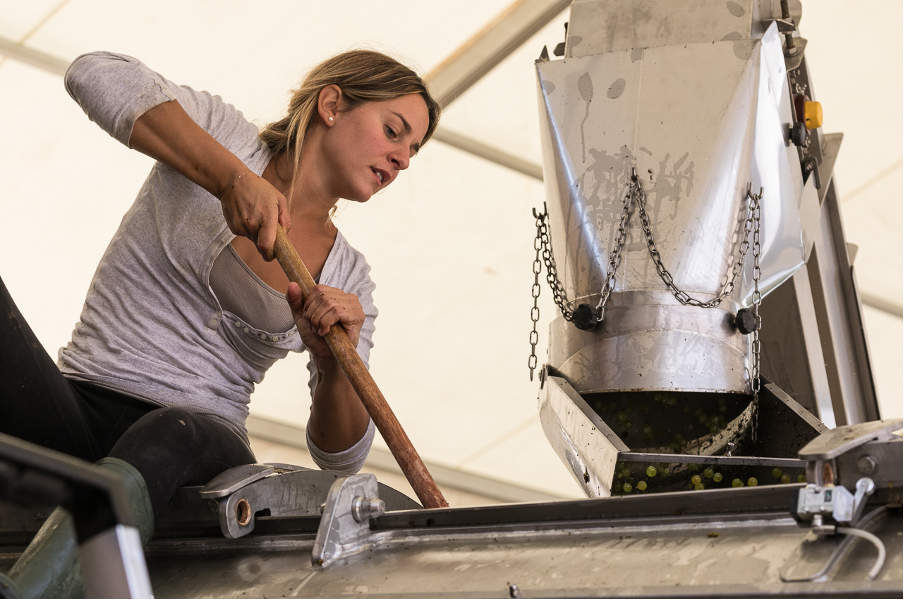 The biodynamic calendar: racking at Comtes Lafon (pictured) is timed according to the lunar phases (Photo: Jean Chevaldonné)
The biodynamic calendar: racking at Comtes Lafon (pictured) is timed according to the lunar phases (Photo: Jean Chevaldonné)
Often associated with organic winemaking, biodynamics also dictates the avoidance of pesticides and chemical fertiliser, and many of its wines are therefore organic in practice. Certified by independent associations (e.g. Demeter and Biodyvin) rather than the government, biodynamics goes one step further, providing a more holistic approach to farming that attempts to embrace all natural biological processes. Coined in 1924 by Rudolf Steiner – an Austrian philosopher and scientist – biodynamics draws on the specific belief that all living species experience constant transformation, due to physical, metaphysical, and cosmic realities acting upon them. While it is not essential for certification, most biodynamic producers therefore follow the biodynamic lunar calendar, which dictates the optimum days for viticulture and winemaking activities, based on the moon’s cycle.
In Burgundy, Comtes Lafon plans its planting, pruning, harvest, racking, and bottling according to the lunar calendar (see photo above), despite not being certified officially. Having shifted to biodynamic farming in 1998, owner and winemaker, Dominique Lafon, tells us that he was initially inspired by the practice in several of his friends’ vineyards at the time, and was “impressed by the way the vines behaved”. He states that while it is more time consuming, biodynamic farming provides him “pleasure to work closer to the vineyards, following their natural rhythms”.
Among a list of other principles, biodynamic producers must complete a cow horn preparation, otherwise known as process 500, in which manure is packed into the horn of a female cow and buried under the vines for six months. The horns are then dug up, and the content of the horns is combined with water and sprayed across the vineyards, in the belief that the solution enhances plant growth and improves the quality of the crops. Dominique tells us that while some results of biodynamic farming can be seen “rapidly, within the first year”, process 500 begins to change the soil “after three years or so, and is fully effective after 10 years”.
In Bordeaux, Château Palmer also completes the cow horn preparation (pictured below) – the Margaux estate began experimenting with biodynamics in 2008, adopting it completely in October 2013, and releasing its first certified vintage in 2018. Winemaker Thomas Duroux, tells us that the adoption of such biodynamic principles has yielded “results in the vineyard” and encouraged “better quality soil”, while helping him to achieve his goal of “growing a vineyard without any use of chemicals”. Explaining the difference between organic and biodynamics, Duroux notes that the latter is “a different way to see agriculture”, and that when you apply biodynamic principles, “you see the farm as an ensemble”. This resonated across several other biodynamic producers, who similarly considered biodiversity to be at the core of this mode of farming.
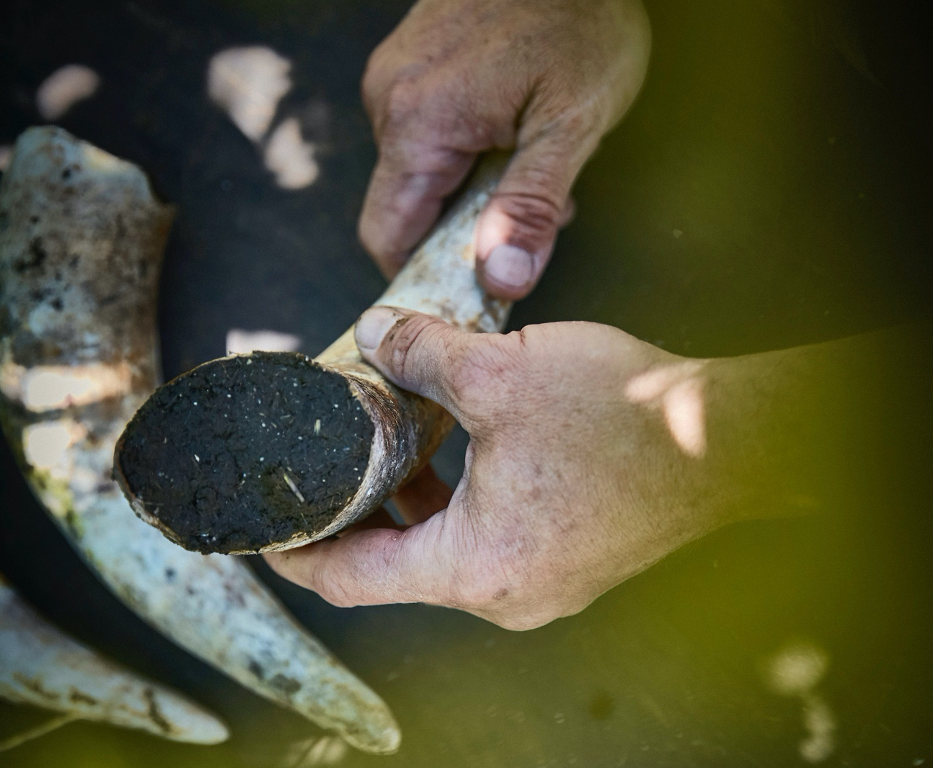 Process 500: biodynamic compost preparations at Château Palmer
Process 500: biodynamic compost preparations at Château Palmer
Indeed, Elisabetta Foradori tells us that since its conversion, Foradori has founded a new focus on biodiversity and sustainability, with livestock now used to produce dairy products and compost for the vineyard. She began to introduce biodynamic principals into the family estate in 1999, converting the whole property in 2002, and eventually achieving certification in 2009. Foradori tells us that she had begun to feel “disconnected to the plants after many years of working in wine”, and biodynamic viticulture allows her to “go into the deepness of the life of the plant and its soil”. She states that the practice has catalysed an “evolution in the fertility of the soil”, watching vine roots “grow deeper and deeper”.
Further south in Chianti, Querciabella conversely practices a “cruelty-free” biodynamics, according to its team, without the use of manure or animal remnants in the soil. Winemaker Manfred Ing states that while “eliminating all of the animal-based preparations”, the estate has implemented a strict cover crop preparation, planting up to 35 different plants across its vineyards, depending on the soils and the grapes that grow in each plot. He states that this improves the quality of the land, whilst adhering to the biodynamic principle of “getting as much quantifiable life in the soil and the vineyard as possible.”
Following the general sentiment of other biodynamic producers, Elisabetta Foradori states biodynamic farming enables the wine to “reflect the message of the terroir” while encouraging “purity and character”. This was particularly pertinent to one of Burgundy’s biodynamic pioneers, Leroy – speaking to Wine Lister, the team notes that biodynamic farming indeed helps the property to better “express the character” of its respective sites. Having implemented biodynamic farming since the day it was purchased by Lalou Bize-Leroy in 1988, the team tells us that “no one else was even organic” in the region at that time, and people “thought it was crazy” to neglect the use of fertiliser and risk decreased yields. They explain that Burgundy is an “ideal place” for biodynamic farming, through its ability to express the disparities between the different vineyard holdings of the same Burgundy varietal – a “true test of where the wine comes from”.
While biodynamic producers approach the practice with variable interpretations, its practitioners are nonetheless enthusiastic about its results. With an increasing number of producers adopting this mode of farming, we look forward to witnessing its wider recognition across the fine wine industry in years to come.
“Finché c’è vino c’è speranza” – As long as there is wine, there is hope.
Never before have Italian winegrowers been able to dedicate as much time to the care of their vineyards as in 2020. The Consorzio Vino Chianti Classico and several further Tuscan producers cite this silver lining to Covid restrictions, and they suspect it will reveal itself in the wine to come. In a year that has caused tribulation across the world, news of Italy’s promising 2020 harvest is certainly welcomed. Wine Lister has spoken to several Italian estates, which reportedly yielded high-quality grapes across the board. While regions – Piedmont and Tuscany – had their respective weather nuances, the general consensus suggests that growing season conditions were balanced, with no mention of hail or storms.
In Montalcino, the Mastrojanni team explained that lockdown prompted improved vineyard inspection in 2020: “[people] couldn’t work indoors in their offices, so the vines received the utmost attention”. They report a “very good harvest” this year, comparing it to the high-scoring 2013. Despite two short heatwaves in July and August, the estate had a mild summer overall, thanks to cooling winds that flow through the Amiata Valley in which its vineyards are situated.
On the other side of Montalcino, Cinelli Colombini reported frost during budburst, which limited the number of grape clusters in 2020. Several other Tuscan producers spoke of reduced volumes due to the cold start to spring (Fattoria Le Pupille’s 2020 yield is 20% lower than last year). Cinelli Colombini’s Brunello grape harvest was nonetheless of “excellent quality”, and despite it being hard to “shine after a masterpiece of a vintage like 2019”, the team believes it will be “difficult to exclude it from being among the best five vintages of the last 20 years”.
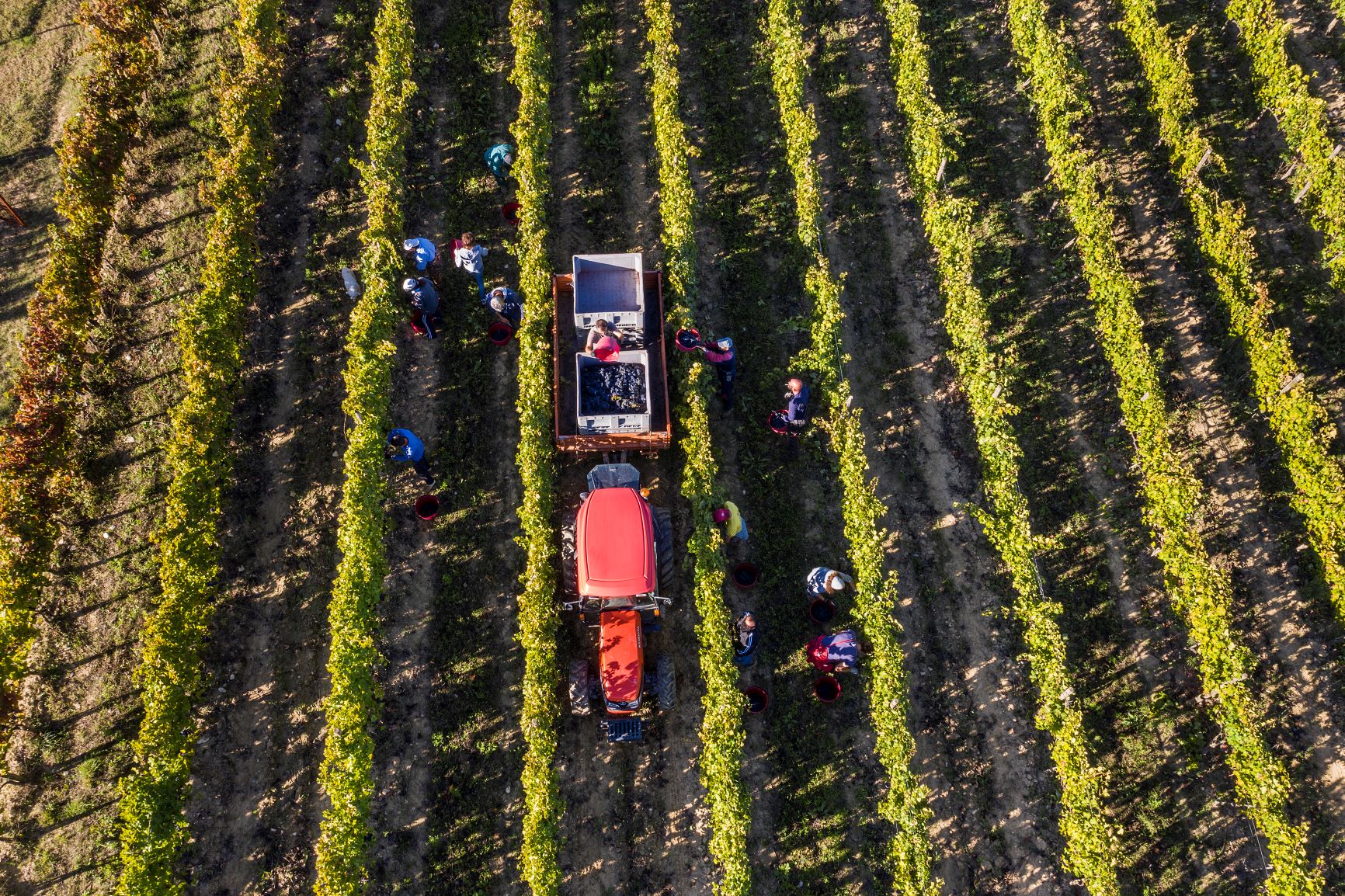 All hands on deck: the 2020 Brunello harvest at Montalcino’s Cinelli Colombini
All hands on deck: the 2020 Brunello harvest at Montalcino’s Cinelli Colombini
In Chianti, Castello di Monsanto began picking its Chardonnay grapes on 8th September, and collected its final Sangiovese on 10th October. Third-generation owner, Laura Bianchi, informed us that their spring was mild, with enough rain to create a “perfect” reserve of water for the vines. After the hot and dry August, a wet start to September helped to regulate maturation – a common theme throughout Tuscany in 2020. The grapes thus developed a “great balance of sugar, pH, and phenolic maturation”, and the first fermentation already suggests a vintage of “great personality, rich tannins, and beautiful acidity”. Further east, Vecchie Terre di Montefili started picking on 29th September – late in comparison to other producers, but normal, the team explains, for their vineyards, which lie 500 metres above sea level (and therefore require a longer maturation period).
Less than an hour away, Brancaia finished its harvest on 30th September (having started on the 3rd week of August). The team tells us that they were forced to harvest their Sangiovese quickly before heavy rain arrived, but that they were lucky that the grapes were “the perfect grade of ripeness”. In contrast, IPSUS owner, Giovanni Mazzei, explains that he and winemaker Gionata Pulignani decided to wait until after the extra rain in September before starting the harvest, “to guarantee more balance, extra aromatics, and temper the alcohol content”. In doing so, the hot and dry summer was counterbalanced; Mazzei states that he could indeed “classify the [2020] as a good compromise between cooler and hotter vintages”.
In coastal Maremma, owner and Production Manager at Fattoria Le Pupille, Ettore Rizzi, tells us that 2020 saw a significant threat of powdery mildew across its vines, especially in the thin-skinned varieties of Sangiovese, Ciliegiolo, and Syrah. He states that they nonetheless managed to trim the affected bunches and stem the problem, while their Merlot and Cabernet vines also “gave us some incredible fruit”. According to Rizzi, “the word that can best describe the 2020 vintage is concentration” – a consequence of the high temperatures in July and August.
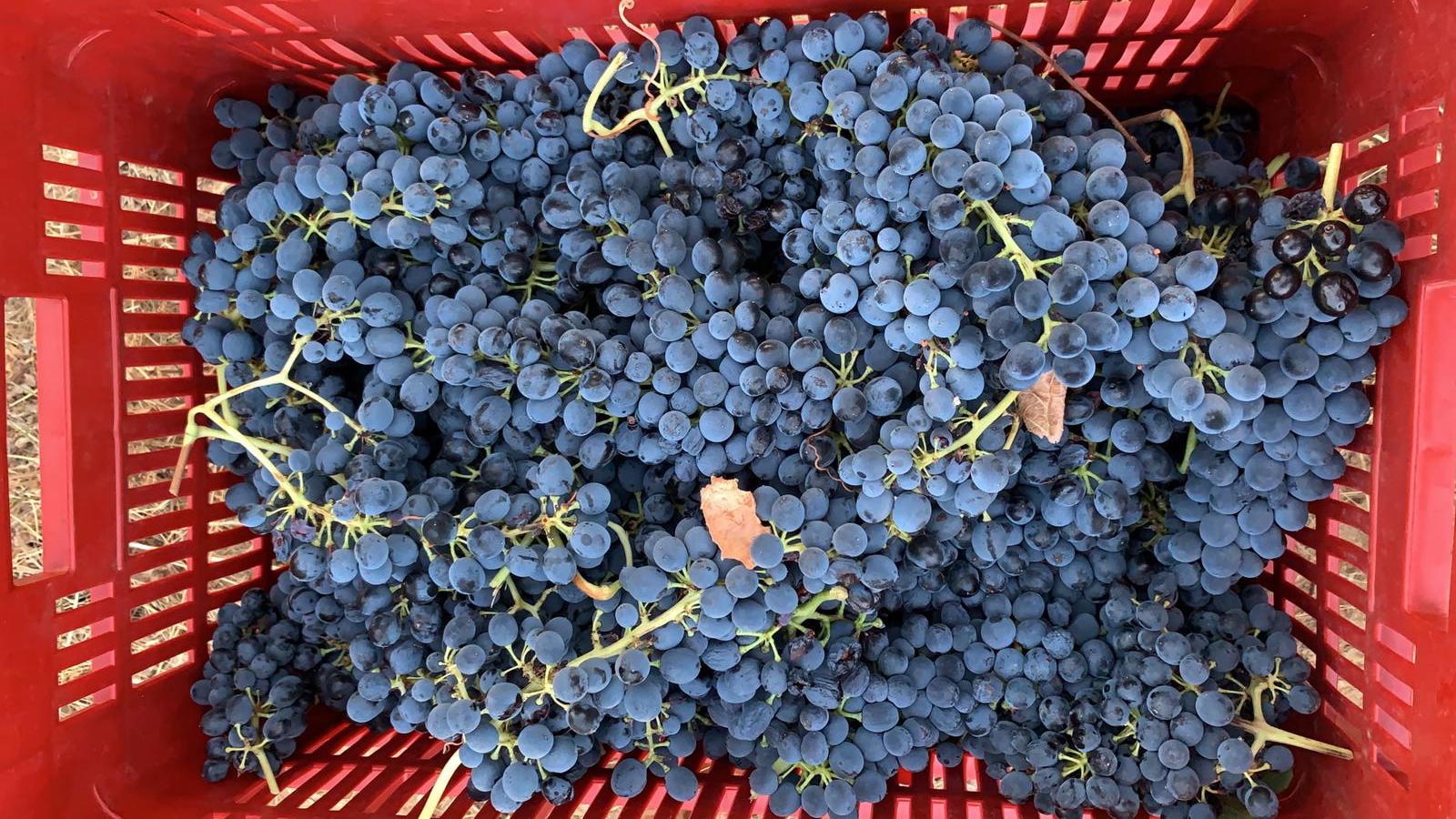 “The final quality of the grapes was really good” – Fattoria Le Pupille’s 2020 Syrah grapes
“The final quality of the grapes was really good” – Fattoria Le Pupille’s 2020 Syrah grapes
In Bolgheri, Ornellaia’s Estate Director, Axel Heinz, declared that their 2020 vintage is “shaping up to be one to remember as a great year”. The property saw “textbook perfect conditions until the end of May”, while June saw a lot of rainfall that “accelerated vine growth”, and required lots of work in the vineyard to keep the canopies under control. Summer saw hot and dry conditions, while rain arrived in the last days of August to alleviate drought stress and lower temperatures, encouraging a more even ripening at the last moment. While an unexpected mid-September heatwave made it necessary to pick all three red varieties – Cabernet Franc, Cabernet Sauvignon, and Petit Verdot – simultaneously at speed, Heinz notes that they nonetheless look “very promising in a rich and structured style”.
Moving up to Piedmont, fifth-generation of the esteemed Gaja family, Giovanni Gaja, tells us that they are so far “optimistic” about the 2020 vintage, despite it being early days to evaluate the exact character of the grapes. Their Barbaresco plots witnessed a moderate July, followed by a warm August that was similarly alleviated by rain towards the end of the month. While they required extra efforts to prevent mildew attacks, the final picked grapes appear “very healthy”.
While 2020 has caused much uncertainty, the recent harvest suggests that there is definitely hope for some excellent wine to come from this year, and we look forward to finding out for ourselves in the future.
As well as marking the year that France won the World Cup Final, 2018 will be remembered in Bordeaux as a tumultuous growing season, starting with nightmare weather conditions, and finishing “in ecstasy” (recap more on the 2018 vintage in Wine Lister’s post-harvest and vintage assessment blogs).
Now that the wines have settled in bottle, it is the world around them that has been thrown into a state of chaos, though one managed impeccably by the organisers of Wednesday’s UGC tasting (see photo below). Tasting around 130 wines, members of the Wine Lister team have chosen a selection of highlights, as examined in this post.

The team’s highlights include seven of the 19 Bordeaux 2018s MUST BUYs, and 11 other picks that were showing the best out of those present at the UGC tasting.
Pauillac and Pessac-Léognan were our top two appellations, with four picks apiece. The two Pichons – Baron and Comtesse – were showing beautifully, the former impressing with a “ripe, autumn berry profile” and a “dense but silky texture”. Pichon Comtesse – one of Wine Lister’s favourites during 2018 en primeur tastings – exhibited toasty notes of “tobacco, coffee, and mocha” on the nose, that opened into an elegant and energetic palate of “black cherry with chai spices”.
In Pessac-Léognan, Domaine de Chevalier presented subtly at first, but opened up into a “heady nose of plum and cassis”, matched with an equally sumptuous palate that was “deep in tone, but lifted in structure”. Malartic-Lagravière displayed a distinct Pessac minerality, and featured an intense, perfumed nose of “morello cherry and lavender”. The palate showed more savoury flavours, nonetheless endowed with a “velveteen texture”.
Elsewhere on the left bank, Margaux had three highlights, including the “sensual and floral” Giscours, and Brane-Cantenac – a “powerball of ripe, layered, and energetic fruit”. MUST BUY Rauzan-Ségla displayed nuanced aromas of “blueberry and raspberry”, with a notably generous and glossy mouthfeel.
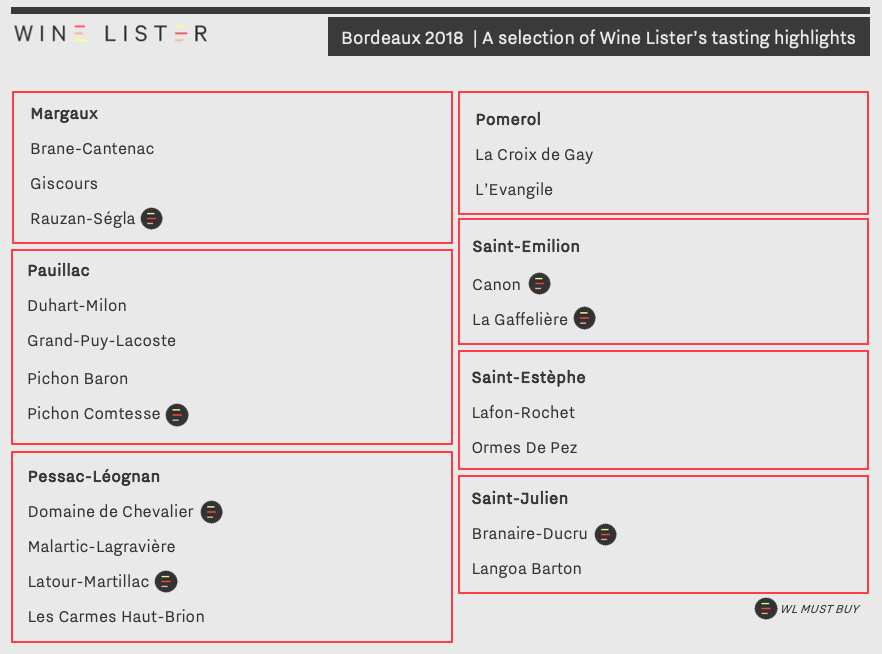
Both Saint-Estèphe highlights offered complex profiles, sharing a comparable first note of “smoke and cured meats”. Lafon-Rochet prevailed in savoury finesse, opening up into “sandalwood and black pepper” on the nose, while Ormes De Pez developed into a “sweet and plummy” bouquet, providing “crunchy red apple and bramble” on the palate.
In Saint-Julien, MUST BUY Branaire-Ducru 2018 showed at the same time a “welcoming warmth” and a plethora of pure and precise fruit notes; “blackcurrant, blackberry, red plum” and a long, floral finish.
On the right bank, Saint-Emilion was well-represented by Canon 2018, which the Wine Lister team noted as “multi-dimensional”, encompassing an opening minerality that swiftly released into a refreshing bouquet of “luscious cherry, raspberry, and crushed strawberries”. Its palate was “utterly moreish”, with “delicate cherry notes” lingering on the finish – “this just goes on and on”, we noted.
In Pomerol, La Croix de Gay stood out with a distinct, potpourri character on the nose, and an “elegant palate of ripe berries”. L’Evangile, displayed a wealth of “black fruit flavours, overlaying its rich but balanced mouthfeel”.
Other wines included in Wine Lister’s 2018 tastings highlights are: Duhart-Milon, Grand-Puy-Lacoste, La Gaffelière, Langoa Barton, Latour-Martillac, and Les Carmes Haut-Brion.
Despite this year’s unparalleled circumstances, mother nature has had no choice but to persevere – members of the Wine Lister team visited Bordeaux during September, to get a feel for the 2020 harvest. After a turbulent nine months, 2020 has reportedly yielded another excellent vintage for Bordeaux, though the region’s vines experienced their own set of ups and downs. Outside of its macro-economic turmoil, 2020 proved an uncertain growing season too, as microclimatic weather patterns appear to have been more influential than ever. Small areas on both banks experienced hail, and rainfall differed by hundreds of millimetres from one property to the next. With a bit of luck, this is a vintage the international trade will be able to taste by next spring – and it will need tasting, in order to gain a comprehensive understanding of the best examples of the vintage.
Common to several properties was an early start to harvest, with masked pickers dispersing across many vineyards up to two weeks ahead of a “normal” year. Indeed, Pavie began harvesting its white grapes (for Monbousquet Blanc) at the end of August – a fortnight earlier than last year. Merlot grapes began to be collected on the 21st of September – nine days earlier than in 2019 (pictured below on the 22nd September).
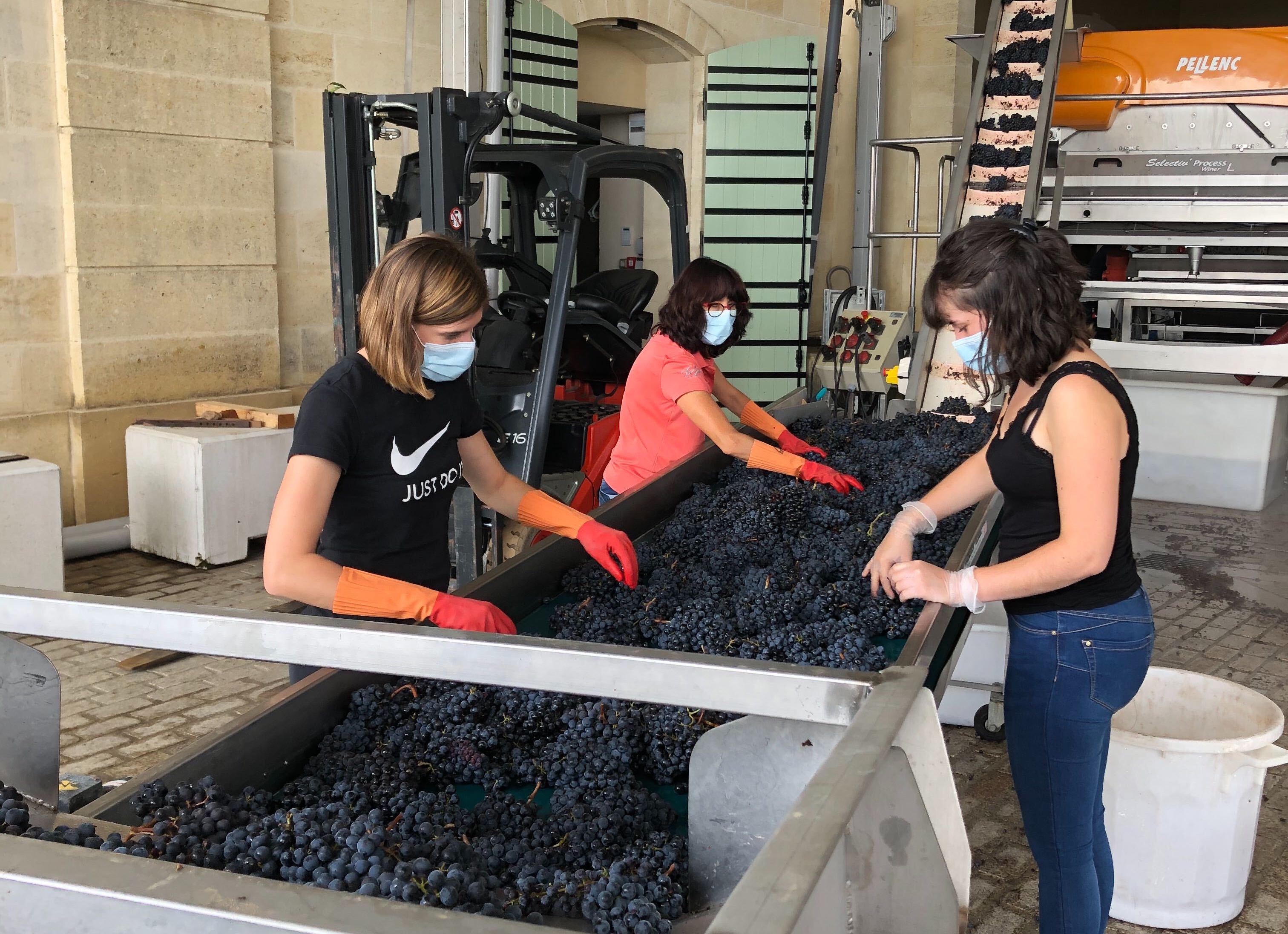 Masked workers sort Pavie’s 2020 Merlot grapes (22nd September 2020)
Masked workers sort Pavie’s 2020 Merlot grapes (22nd September 2020)
Pavie saw lower rainfall in 2020 than parts of the Médoc. The position of its vineyards at higher altitude on the south-facing slope of its renowned limestone plateau allows for both phenolic maturity and the retention of freshness. Its new Commercial Director, Olivier Gailly, notes that the mid-harvest showers also helped with the latter, freshening up the Cabernets prior to picking, and that subsequent high wind speeds dried the grapes, and prevented mildew from setting in.
Just a few kilometres north-west, Saint-Émilion star Angélus did not have a particularly early harvest in 2020, starting on the 15th of September – just three days earlier than last year. The estate saw mildew at the beginning of the season, which they managed to control ahead of a good flowering. Eighth-generation manager, Stéphanie de Boüard is confident in the new vintage, aligning it with the iconic 1947 or 2010 – “my father told me not to be ashamed to say it”, she notes of the comparison. Early analyses show the 2020 will likely be high in alcohol, but with a low pH, creating a freshness and an overall balance that was encouraged by mid-harvest rain. “This year picking dates have been more important than ever”, she adds, referring to the retention of fresh fruit, as opposed to more cooked aromas than can occur in warmer Bordeaux vintages.
Further north-west still in Pomerol, Beauregard also received much-needed rain during harvest, which similarly helped to soften the skins of its Cabernet grapes. Summer drought was more apparent here, repeating the 2018 phenomenon of hydraulic stress on the vines, and resulting in a smaller yield than 2019.
Moving to the Médoc, more properties saw the same hot and dry climatic conditions in 2020, resulting in instances of small grapes with high alcohol potential and lower acidity. In Margaux, d’Issan saw 16% potential alcohol in some of its early Merlot grapes (the highest ever recorded), and consequently welcomed the mid-September showers. Neighbouring Palmer anticipated the rain, and held off picking its Cabernet Sauvignon grapes until it came and went, ensuring the thinning of skins on smaller berries, and an overall reduction in alcohol percentage. The estate saw limited yields due to the dry summer, and Managing Director, Thomas Duroux, quipped that although “négociants would have liked a vintage with high volume and lower prices, [2020] will be a small vintage…” While he implies it might be more expensive than the trade had hoped, he nonetheless expects the 2020 to be “rich and exuberant”, sharing the power and concentration of 2018.
In Saint-Julien, owner of Branaire-Ducru, François Xavier Maroteaux describes a 2020 growing season of neat balance. The estate had a “wet post-harvest Autumn in 2019”, which helped to prevent drought stress throughout the new growing season. As the summer began to dry out, the estate saw 100 millimetres of rainfall in a short period (at the end of August), followed by a sunny and warm September. The season itself, Maroteaux muses, is similar to the 2011 vintage. He believes the resulting wine is worth excitement, after a steady and successful ripening, avoiding any disease.
In Pessac-Léognan, Malartic-Lagravière expects a concentrated wine in 2020, having also seen low volumes of mainly small berries due to the heat. Neighbouring Domaine de Chevalier echoed the sentiment, and we were surprised to hear from owner, Olivier Bernard, that there had not been a drop of rain at estate the day before our first visit (21st September), despite it raining throughout the same day in the Médoc, and in Bordeaux itself.
 The last day of picking at Domaine de Chevalier (30th September 2020)
The last day of picking at Domaine de Chevalier (30th September 2020)
“There have been lots of choices to make this year”, he continues – one of which no doubt was whether to trust the weather forecasts, particularly around harvest. With fewer planes flying around, forecasts were less accurate, and while rain fell further north, Pessac often remained dry. Bernard explains that the picking windows were tight in 2020: “instead of four days where the grapes are fine to pick, there’s one day” – since the drought and heat would cause alcohol to rise, and acidity to deplete quickly.
It seems therefore that we have another winemaker’s vintage on our hands. Mirroring somewhat the choppy commercial seas of this year, Bordeaux has had to navigate unpredictable viticultural waves too. What we have heard of the 2020 harvest thus far nonetheless leaves us hopeful, and anticipating eagerly the en primeur tastings of next spring.
Taittinger Comtes de Champagne 2008 was released yesterday (1st October) at c.£89 (per bottle in-bond), marking one of the last 2008s from the “Grandes Maisons” to enter the market. The release has reignited discussion on the success of the vintage in Champagne, which has been declared one of the best of the decade along with 2002. Below we investigate top 2008s, and where the latest addition from Taittinger fits within them.
Characterised by a consistent, dry, and cool growing season, climatic conditions in 2008 encouraged slow veraison across Champagne, which enabled grapes to achieve their full phenolic maturity while retaining acidity. The combination of both gives the vintage considerable ageing potential, and unyielding structural integrity.
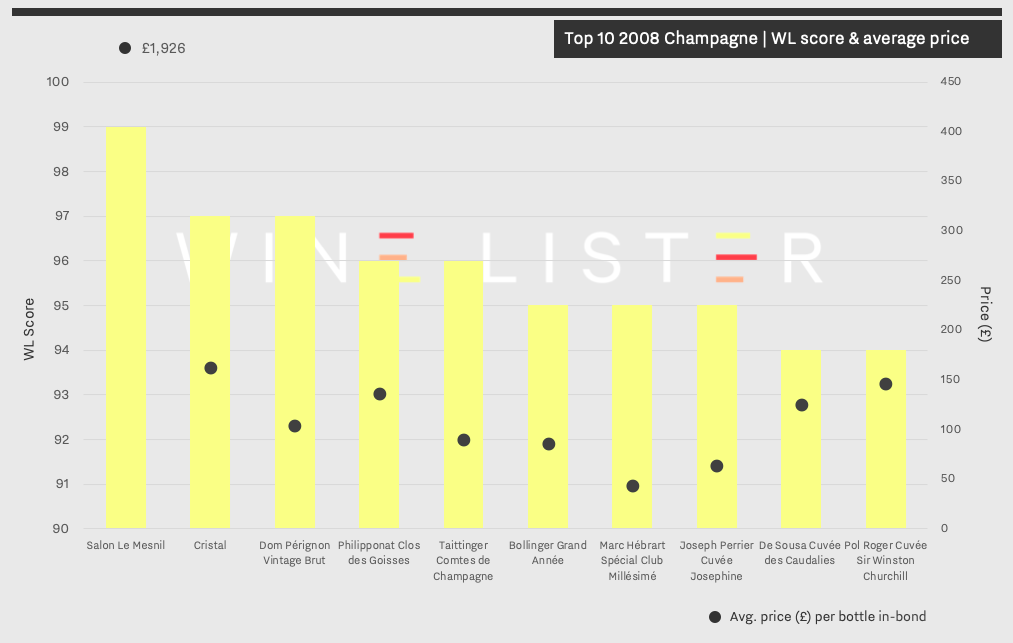
As illustrated above, the top 10 2008 champagnes by WL score exhibit impressive quality, with the top three wines gaining scores of 97 and above. This has not been achieved in the past four vintages, with Krug Brut Vintage 2003 being the most recent back vintage of a champagne to achieve a WL score of 97. Indeed, the top 10 champagnes gain an average WL score of 95.8 in 2008, compared to an average of 94.6 across the top 10 champagnes from the previous vintage.
The newest addition to the top 10 haul, Taittinger Comtes 2008 shows good value within the wider context of the vintage, despite entering the market at a 26% premium on the current market price of its 2007 vintage. While achieving the same WL score as MUST BUY Philipponat Clos des Goisses 2008 (96), Taittinger’s latest release is available for 34% less, (£89 vs. £135 per bottle in-bond). Similarly, it achieves one more WL point than Bollinger Grand Année 2008 (available for £85 per bottle in-bond), for a very slight premium.
Wine Lister partner critic, Antonio Galloni awards Taittinger Comtes de Champagne 2008 98+ points, stating it “is simply breathtaking” and “represents the purest essence of the Côtes des Blancs in a great, historic vintage”. He concludes, “readers who can find the 2008 should not hesitate”.
Taittinger Comtes de Champagne is historically one of the top 10 most liquid champagne brands, giving it further investment appeal. Additionally, Taittinger announced that it has not produced any 2009, 2010, or 2011 Comtes de Champagne, due to poor weather conditions during these years – a fact that may well increase interest in this latest release.
Also featured in the list of top 10 2008 Champagnes by WL score are: Salon Le Mesnil, Cristal, Dom Pérignon Vintage Brut, Marc Hébrart Spécial Club Millésimé, Joseph Perrier Cuvée Josephine, De Sousa Cuvée des Caudalies, and Pol Roger Cuvée Sir Winston Churchill.
Château Palmer launched its first back-vintage release yesterday (Thursday 24th September). Named “N-10”, this new release phenomenon is planned as an annual event henceforth, releasing each year the vintage celebrating 10 years of age.
N-10 therefore begins on an exceptional note for quality, with Palmer’s 2010 vintage (which earns a WL score of 96 – its second-highest ever). It is also worth noting that 2010 was the second vintage of Palmer to benefit from some biodynamic experimentation, ultimately leading to its full certification in 2017.
Wine Lister partner critic, Neal Martin, awarded Palmer 2010 96 points after tasting at BI Wines’ 10 years on tasting in February this year. “This is an outstanding Palmer, but it needs more time in bottle”, he notes. Wine Lister’s CEO and Founder, Ella Lister, concurs, stating, “the wood still apparent after spitting will certainly integrate more with time – because this needs lots of time”, though her overall assessment is perhaps more generous than Martin’s 96 points. She adds, “There’s a quiet, dreamy poise to this wine. [It is] enigmatic, brooding, and spellbinding”.
The last remaining ex-château stocks of Palmer 2010 entered the UK market at £293 per bottle (in-bond), making them the highest-priced recent vintage on the market. The new price of Palmer 2010 therefore sits at a 33% premium to previous remaining market availability.
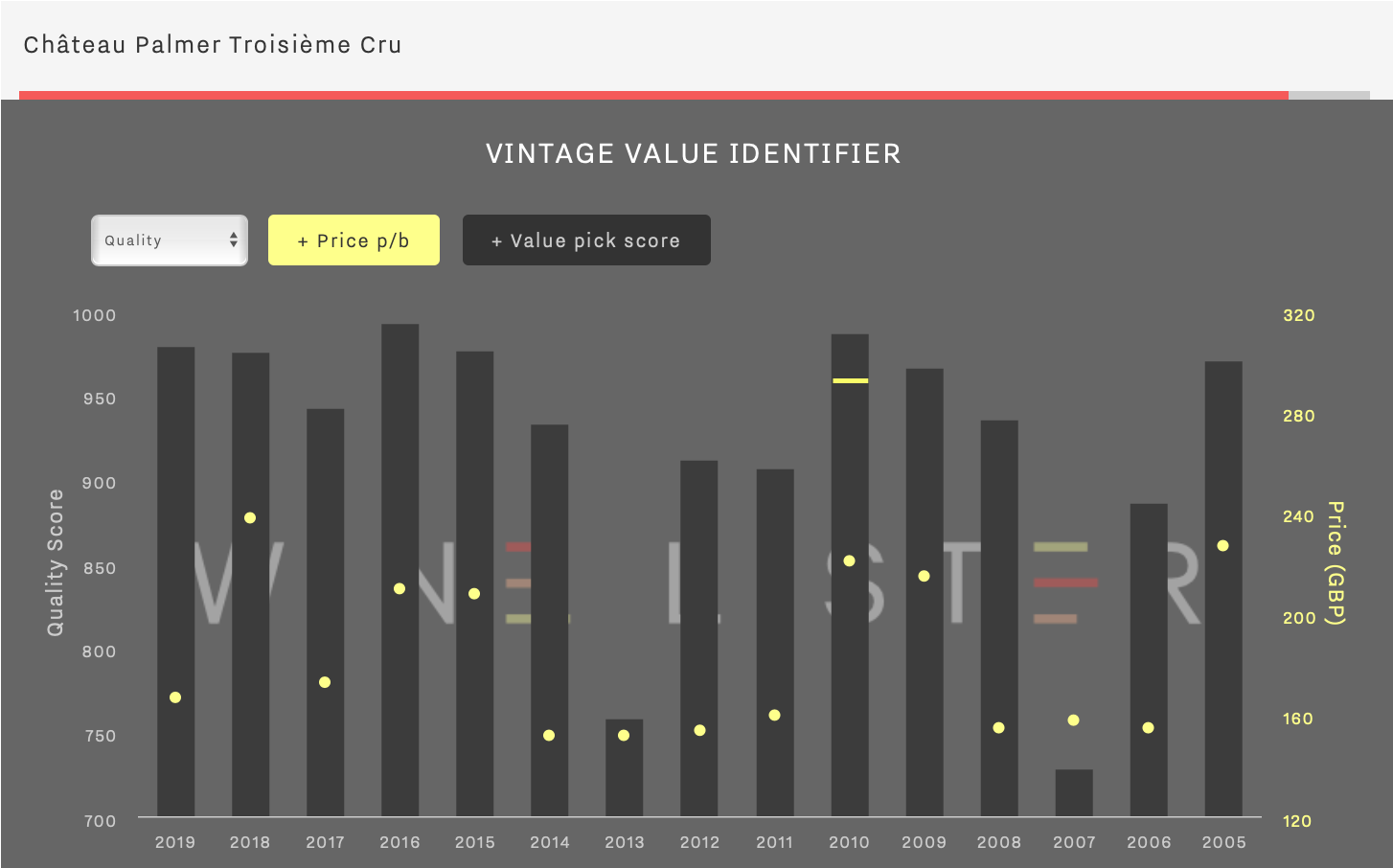
This is a bold hike up from Palmer 2010’s initial release price, however Director Thomas Duroux’s communication on production quantities and pricing as a direct result of the château’s uncompromising commitment to biodynamics and exceptional quality has prepared the market for it. The last few en primeur releases have set a solid scene for Palmer’s new strategy, and provide definitive proof that the château has outgrown the bounds of its classification.
We understand that immediate take-up for the N-10 release has been good, if not quite at the fast sell-out pace of en primeur. That is not the objective here – Duroux is confident that this ex-château stock will satisfy demand in the mid-term.
Indeed, even at its higher price, Palmer 2010 remains a Wine Lister MUST BUY.
If 2020 has given any gift at all, it would be time at home, which many have used to read more, and learn new things on topics familiar and foreign. Today’s blog helps you discover the unique stories behind some of the world’s most recognisable wines. Read on below to discover beyond the label of these notable names.
Krug – Cracking the code
Beyond its reputation as one of the most admired Champagne brands, Krug has also pioneered an industry innovation: Krug iD. Since 2011, a six-digit “identification code” has been printed on the back label of every Krug bottle. Scanning the code with a smartphone gives drinkers access to the unique story of the individual bottle, including a vintage report, as well as offering food pairing suggestions, and recommendations for its storage and serving.
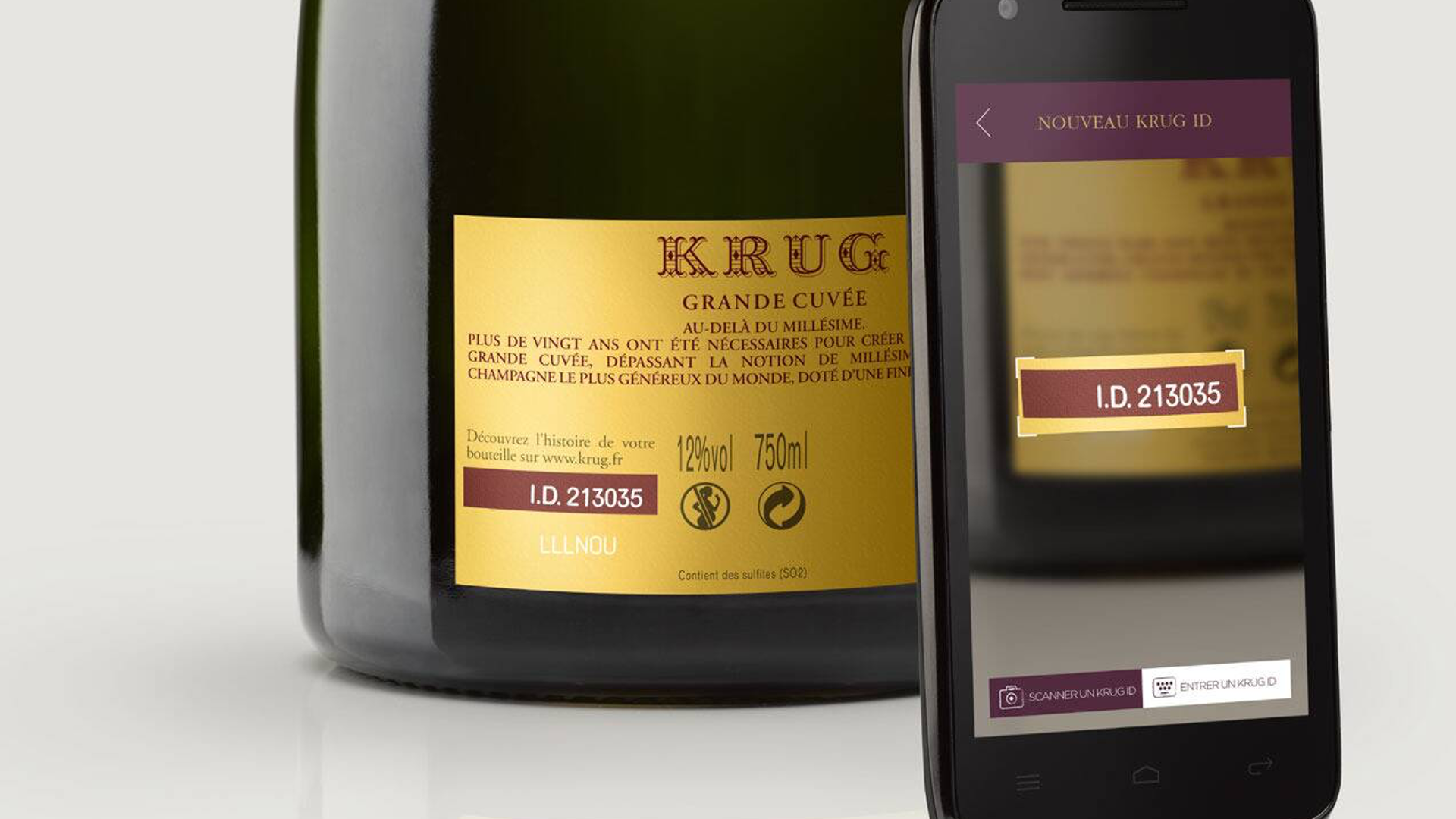 Photo credit: lvmh.com
Photo credit: lvmh.com
Aside from its technical innovation, the quality of Krug is simply undeniable. The latest NV Krug Brut Grand Cuvée (168ème Édition) achieves MUST BUY status, and receives a score of 19/20 from Wine Lister partner critic, Jancis Robinson, who notes a “remarkable acidity underpinned by great depth of flavour and beautiful balance on the finish”. It is available to purchase by the bottle from Crump, Richmond & Shaw Fine Wines for £133 (in-bond).
Cheval Blanc – Cultivation experimentation
Saint-Emilion superstar, Cheval Blanc, has illustrated significant long-term investment in its viticulture in recent years. Initiated by Managing Director, Pierre Lurton, the estate has conducted countless soil analyses, viticultural experiments, and regular phenological surveys to establish the best grape variety for each of its three different terroirs (gravel over clay, deep gravel, and sand over clay). Experiments have tested each possible variation of soil type for the Bordeaux varietals used in Cheval Blanc – 52% Cabernet Franc, 43% Merlot, and 5% Cabernet Sauvignon – to establish which combination delivers the best quality of fruit. Indeed, the château found its plot of sandy terroir to be particularly well suited to Cabernet Franc, providing a reference point for the best that can be achieved with the grape in Bordeaux.
Released en primeur in July this year, the 2019 Cheval Blanc was awarded 18 points from Jancis Robinson, who describes it as “beautifully poised on the palate with a density of fruit and silky texture of finely matted tannins. Pure, seductive and persistent”. It can be bought by the case of six for £2,400 (in-bond) from Farr Vintners.
Bond – Truth in terroir
With grapes sourced from select hillside plots across Napa Valley, Bond’s portfolio of Cabernet Sauvignon-based wines aims to reflect each wine’s specific sense of place. The estate owns five sites featuring some of the region’s best terroirs, and has dedicated its viticultural practice to preserving the best expression of its individual plots; Melbury, Pluribus, Quella, St. Eden, and Vecina.
The fruit from each site is vinified separately, while winemaking procedures are kept the same across all of the Bond wines in order to honour terroir differences. The Vecina vineyard, for instance, sits on volcanic soil at between 221 and 330 feet above sea level, causing a thermal amplitude of cool nights and hot afternoons, which renders its wines complex and layered, with concentrated tannins. The 2015 Bond Vecina was awarded 97 points from Wine Lister partner critic, Antonio Galloni (Vinous), who indeed describes it as “super-expressive. A big, dense wine, the 2015 possesses stunning richness and dimension”. It is available by the bottle for £443 (in-bond) from Fine+Rare Wines.
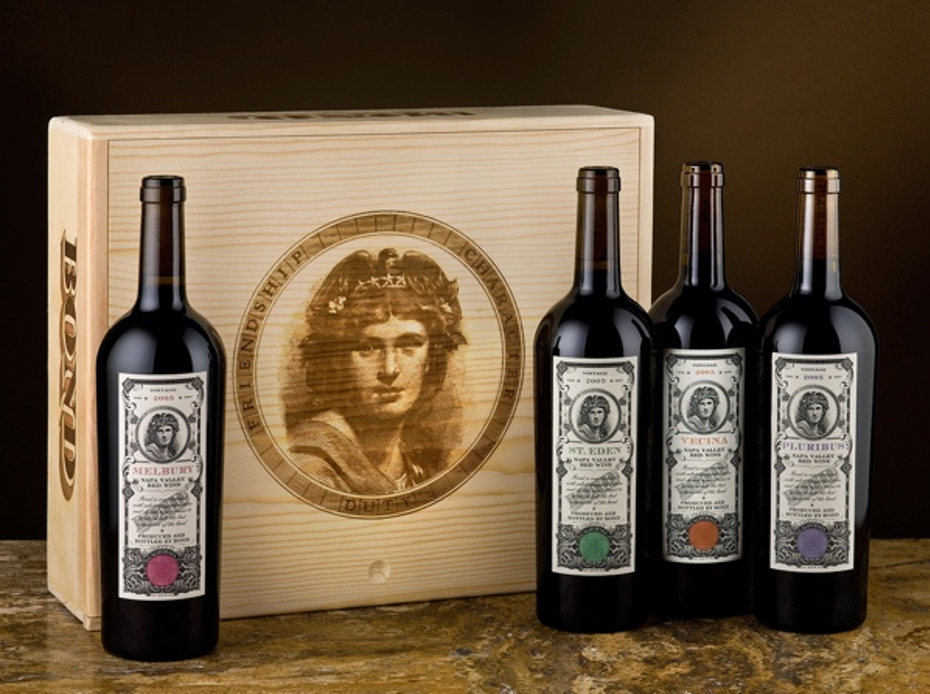 A line-up of Bond wines, that communicate the differences in the estate’s Napa Valley sites.
A line-up of Bond wines, that communicate the differences in the estate’s Napa Valley sites.
Ornellaia – An artist’s interpretation
Outside its global renown as a reference for quality in Tuscany, Ornellaia also stands out for its own special label tradition. Established in 2006, the estate’s annual artist program, Vendemmia d’Artista, commissions a new artist each year for the creation of the limited-edition label, inspired by a single word chosen by winemaker, Axel Heinz, to capture the essence of the new vintage. The latest release (2017) was named “Solare” due to the especially hot growing season, in which both the Cabernet Sauvignon and Cabernet Franc grapes were harvested as early as August for the first time in history. This inspired contemporary artist, Tomás Saraceno’s label design (below).
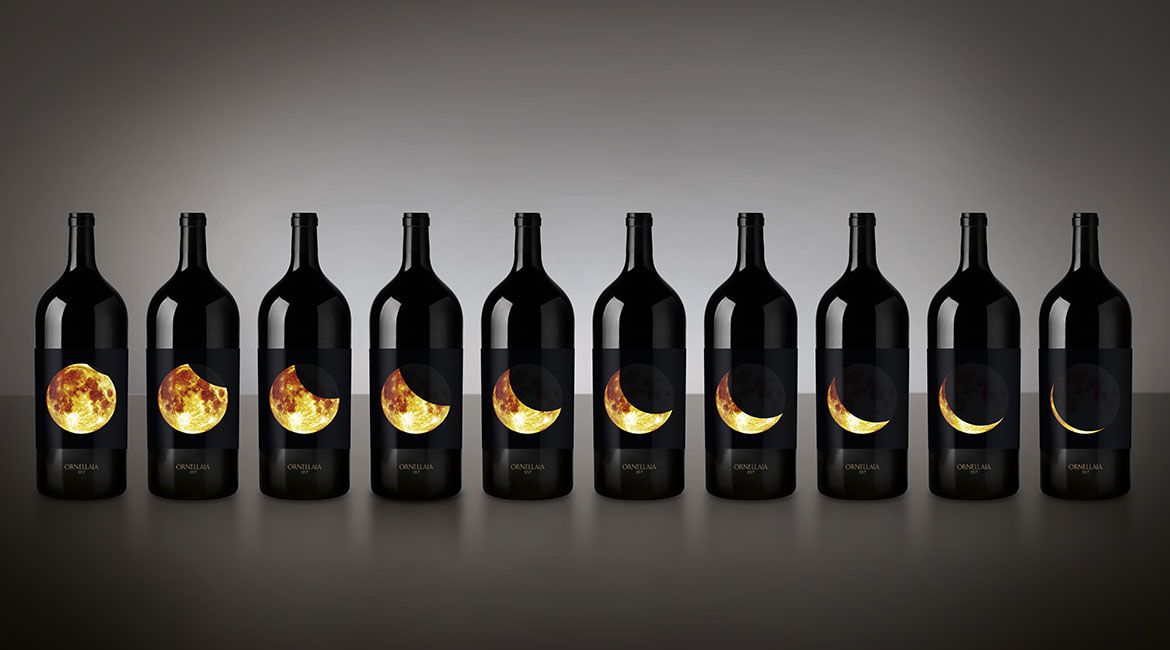 Photo credit: ornellaia.com
Photo credit: ornellaia.com
Awarding the Ornellaia 2017 97 points, Wine Lister partner critic, Antonio Galloni describes it as “sumptuous and racy, as Ornellaias from warmer years tend to be, but it is not at all heavy or overdone. In a word: superb!”. The vintage can be bought by the case of six from Justerini & Brooks for £765 (in-bond).
The four above-mentioned wineries provide just a small handful of innovative and engaging examples of how to make a wine stand out from the crowd. Wine Lister has launched a dedicated PR and communications service in order to help more producers do the same on the UK market. To find out more, please contact us at team@wine-lister.com.
 The two-year price performance of a basket of 175 Burgundy wines (the same wines featured in our previous study on the region in 2018), based on the last 30 vintages. Price data partner: Wine Owners.
The two-year price performance of a basket of 175 Burgundy wines (the same wines featured in our previous study on the region in 2018), based on the last 30 vintages. Price data partner: Wine Owners. The two-year popularity growth of each Burgundy subset. Popularity data partner: Wine-Searcher.
The two-year popularity growth of each Burgundy subset. Popularity data partner: Wine-Searcher.

 The biodynamic calendar: racking at Comtes Lafon (pictured) is timed according to the lunar phases (Photo: Jean Chevaldonné)
The biodynamic calendar: racking at Comtes Lafon (pictured) is timed according to the lunar phases (Photo: Jean Chevaldonné) Process 500: biodynamic compost preparations at Château Palmer
Process 500: biodynamic compost preparations at Château Palmer







 Photo credit: lvmh.com
Photo credit: lvmh.com A line-up of Bond wines, that communicate the differences in the estate’s Napa Valley sites.
A line-up of Bond wines, that communicate the differences in the estate’s Napa Valley sites. Photo credit: ornellaia.com
Photo credit: ornellaia.com